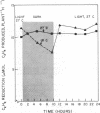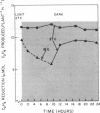Abstract
The objectives of this study were (a): to define the effects of light, dark, and temperature on nodule activity (acetylene reduction), and (b) to establish the contributions of reserve carbohydrate and recent photosynthate to the support of nodule function. An in situ assay of nodule activity was developed for use with intact, hydroponically grown soybeans (Glycine max [L.] Merr. cv. Calland).
Nodule activity of 35-day-old plants grown in controlled environment chambers decreased during a 10-hour dark period at 18 C, compared with activity during the preceding and subsequent 14-hour light periods at 27 C. In contrast, plants that were maintained at a constant 27 C did not vary in nodule activity during diurnally varying dark and light exposure. Nodules of plants exposed to diurnal 18 and 27 in 24-hour continuous dark were less active at 18 C than at 27 C. At constant 27 C, nodule activity was sustained throughout the 24-hour dark period. Thus, nodule activity was independent of short term dark periods but dependent on temperature; nodule activity was decreased at the lower temperature.
Temperature also affected the nodule activity of plants maintained in the light. Exposure of shoots and roots of intact plants to the lower temperature (5 hours at 18 C) during the light period resulted in a marked decrease in nodule activity, compared with that of plants maintained at 27 C. Exposure of only the shoot portion to 18 C (roots were maintained at 27 C) resulted in a similar decrease in nodule activity.
Nodules of plants exposed to 10 days of diurnally variable dark, light, and temperature had high activity in the light at 27 C and low activity in the dark at 18 C. Nodule activity of plants at a constant 27 C was not affected by diurnally variable dark and light exposure throughout the 10-day period, although activity generally increased with time due to increased nodule mass. At a constant 27 C, nodules of intact plants in continuous dark sustained activity through 72 hours before declining to zero by 7 days. At diurnally varying 18 and 27 C in continuous dark, peak diurnal nodule activity was sustained through 5 days, and then declined to zero by 8 days. Analyses of the carbohydrate content of tissue harvested from this study suggested use of reserve photosynthate (primarily of shoot origin) in support of nodule activity in the absence of concurrent photosynthesis.
Full text
PDF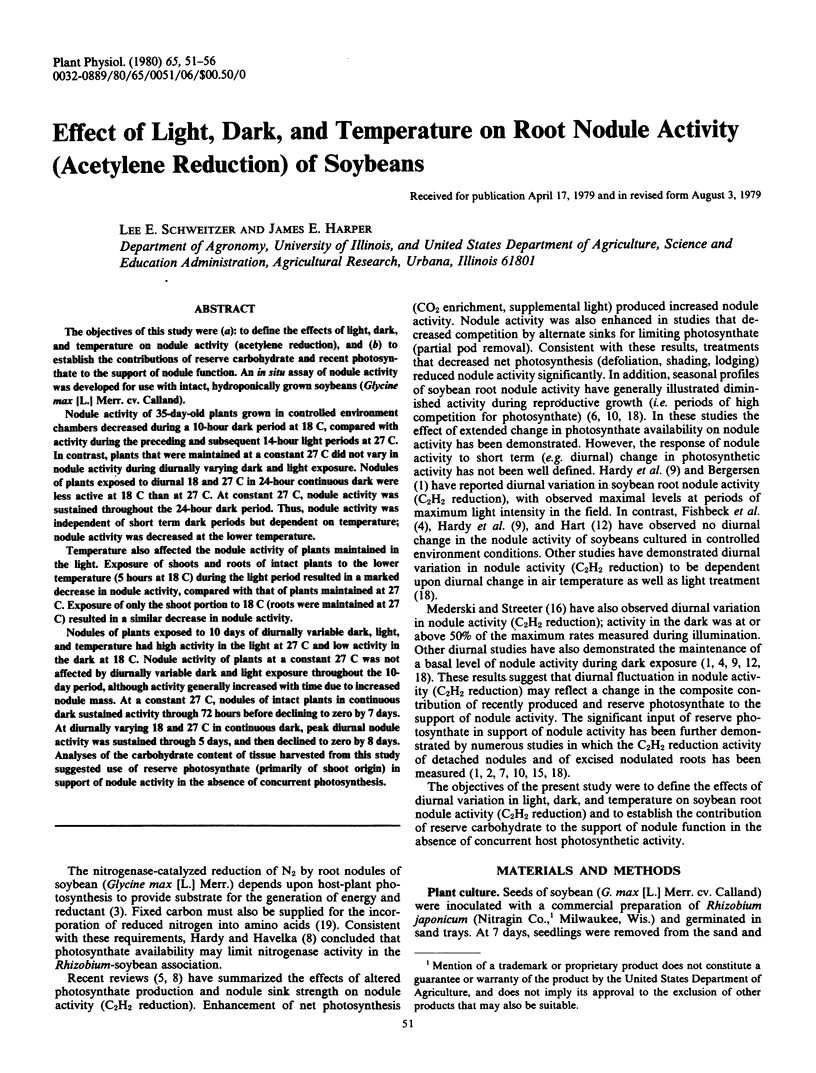
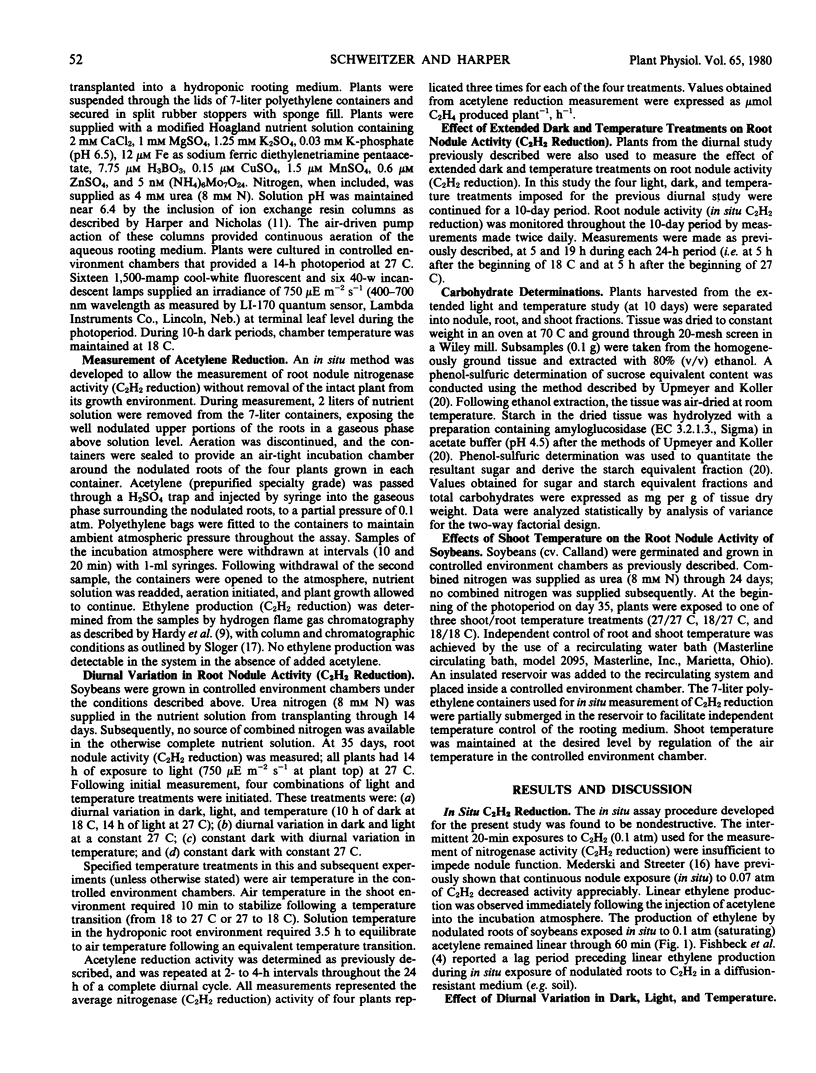
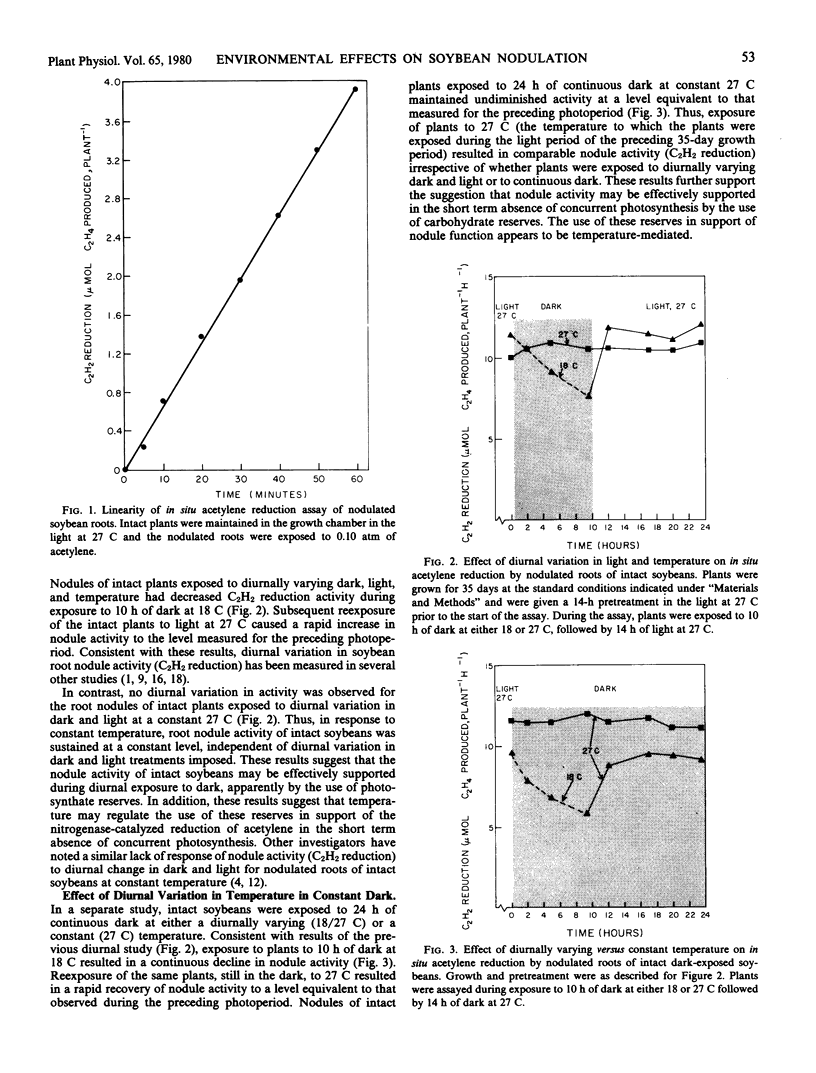
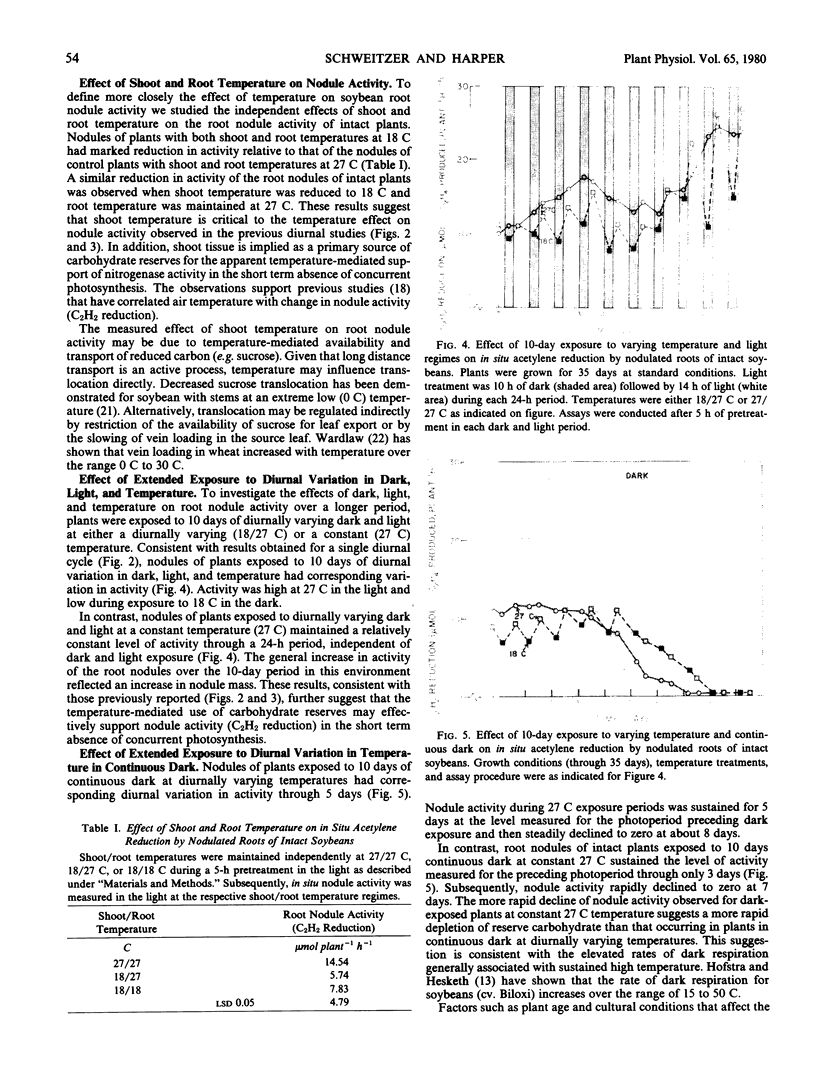
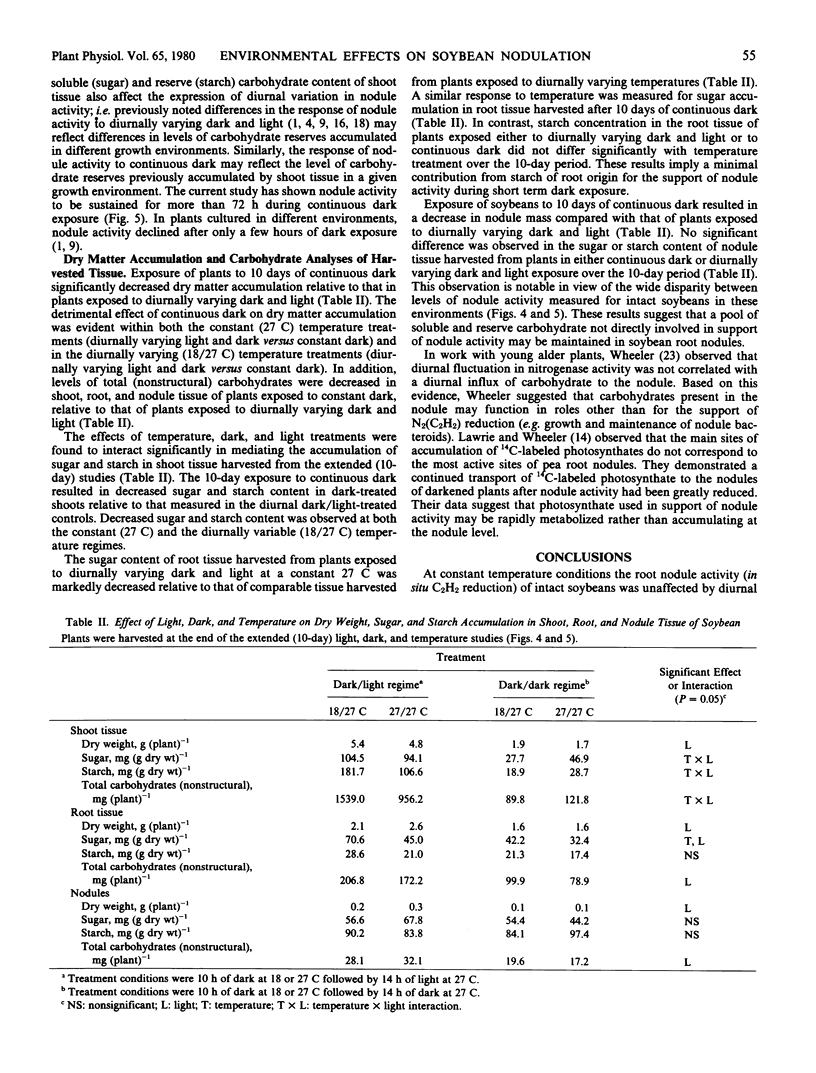
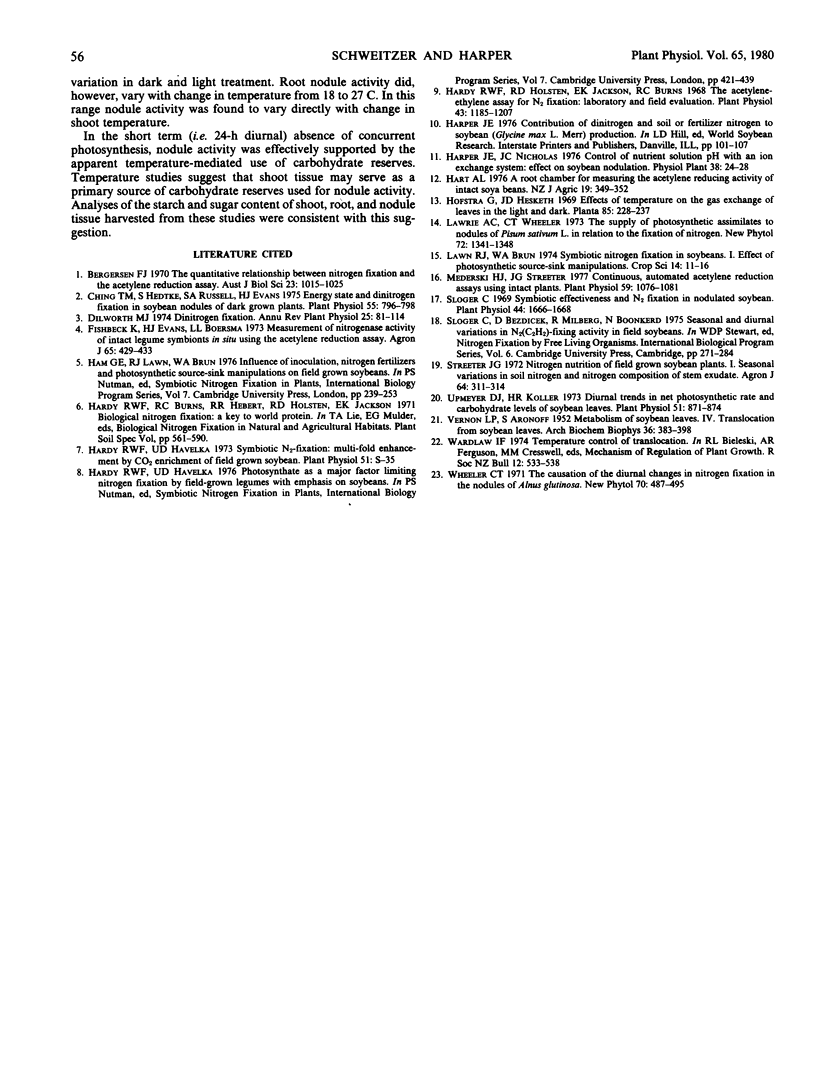
Images in this article
Selected References
These references are in PubMed. This may not be the complete list of references from this article.
- Ching T. M., Hedtke S., Russell S. A., Evans H. J. Energy State and Dinitrogen Fixation in Soybean Nodules of Dark-grown Plants. Plant Physiol. 1975 Apr;55(4):796–798. doi: 10.1104/pp.55.4.796. [DOI] [PMC free article] [PubMed] [Google Scholar]
- Hardy R. W., Holsten R. D., Jackson E. K., Burns R. C. The acetylene-ethylene assay for n(2) fixation: laboratory and field evaluation. Plant Physiol. 1968 Aug;43(8):1185–1207. doi: 10.1104/pp.43.8.1185. [DOI] [PMC free article] [PubMed] [Google Scholar]
- Mederski H. J., Streeter J. G. Continuous, automated acetylene reduction assays using intact plants. Plant Physiol. 1977 Jun;59(6):1076–1081. doi: 10.1104/pp.59.6.1076. [DOI] [PMC free article] [PubMed] [Google Scholar]
- Sloger C. Symbiotic effectiveness and n(2) fixation in nodulated soybean. Plant Physiol. 1969 Dec;44(12):1666–1668. doi: 10.1104/pp.44.12.1666. [DOI] [PMC free article] [PubMed] [Google Scholar]
- Upmeyer D. J., Koller H. R. Diurnal trends in net photosynthetic rate and carbohydrate levels of soybean leaves. Plant Physiol. 1973 May;51(5):871–874. doi: 10.1104/pp.51.5.871. [DOI] [PMC free article] [PubMed] [Google Scholar]
- VERNON L. P., ARONOFF S. Metabolism of soybean leaves. IV. Translocation from soybean leaves. Arch Biochem Biophys. 1952 Apr;36(2):383–398. doi: 10.1016/0003-9861(52)90424-4. [DOI] [PubMed] [Google Scholar]



